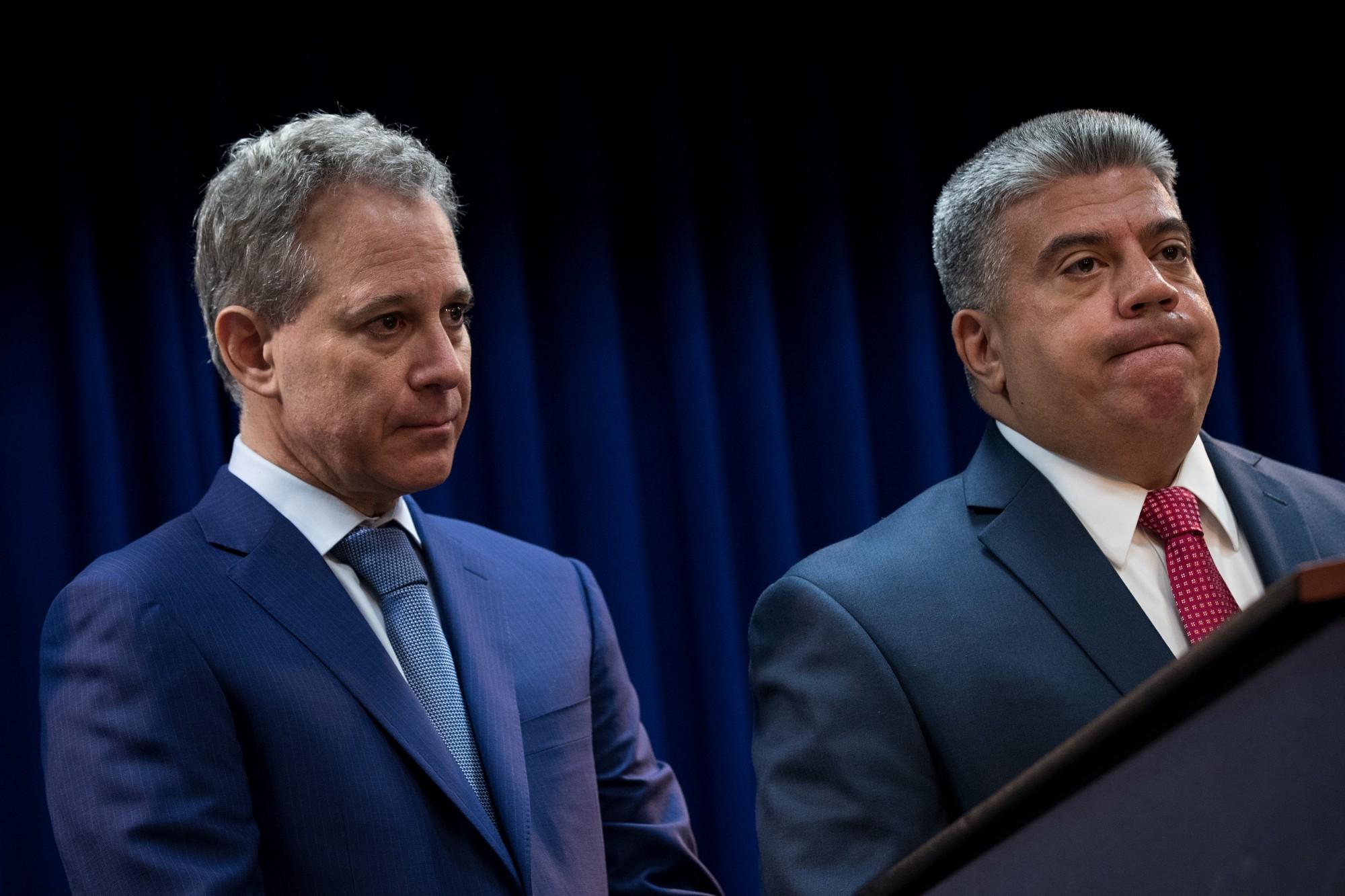Protesting ICE Courthouse Arrests Doesn’t Get NYC Prosecutors Off the Hook for Everyday Injustice
On February 14, Manhattan, Brooklyn and Bronx prosecutors stood in front of Manhattan Supreme Court to protest U.S. Immigration and Customs Enforcement (ICE) arresting New Yorkers involved in criminal cases. The event followed growing protests from public defenders — including walk-outs — taking aim at ICE’s practice of staking out courthouses to locate targets for deportation. According to a December 2017 report by The […]

On February 14, Manhattan, Brooklyn and Bronx prosecutors stood in front of Manhattan Supreme Court to protest U.S. Immigration and Customs Enforcement (ICE) arresting New Yorkers involved in criminal cases.
The event followed growing protests from public defenders — including walk-outs — taking aim at ICE’s practice of staking out courthouses to locate targets for deportation.
According to a December 2017 report by The Fund for Modern Courts, arrests in courthouses by immigration authorities of people presumed to be undocumented increased fivefold in 2017 from the previous year.
But until their recent protest, district attorneys in New York have largely been silent about ICE courthouse crackdowns, though last fall Brooklyn DA Eric Gonzalez did describe the immigration enforcement agency seizing three men with no criminal records outside Brooklyn Criminal Court as “outrageous.”
ICE courthouse arrests present something of a sweet spot for elected district attorneys trying to burnish their bonafides as “progressive prosecutors” without having to address the obvious injustices they preside over on a daily basis inside courthouses.
District attorneys say that ICE arrests disrupt the public’s “access to justice.” They are not worried about the arrests, per se, but instead take issue with their location, arguing that courthouse arrests will discourage undocumented witnesses or victims of crimes from coming to court to help the prosecutors settle their cases.
This presumes that New York courthouses are places where justice is actually sought and that ICE is disrupting what is otherwise a fair and honest process.
Spend a single day in New York City’s low-level criminal courts — where most of the ICE arrests have occurred — and you can’t help but come away with an understanding that racism and prosecutorial overreach are the defining characteristics of the system.
Long lines — made up almost exclusively of people of color — snake outside of courthouses every day. The power prosecutors wield ensures that defendants very rarely see their day in court; 99 percent of cases are disposed of through plea agreements. More than 250,000 people are prosecuted in New York City courts each year, 7 million total since the advent of Broken Windows policing in the mid-1990s. Every eight minutes, a defendant is sent to Rikers Island from criminal court in New York — and if it were up to these prosecutors, the pace would be even quicker.
Most prosecutions end with lifelong consequences inhibiting a defendant’s ability to get a job, a loan for a car or school, an occupational license, access to public housing, or to retain custody of his or her children. These consequences are typically not considered as district attorneys grind their cases through the system.
District attorneys in New York perpetuate injustices in many other ways. Manhattan District Attorney Cy Vance has an abysmal approach to discovery practices — taking full advantage of an outdated state law in order to withhold evidence against people until, literally, the day before trial. Manhattan public defenders call this “trial by ambush.”
District attorneys have tremendous discretion on issues like bail, discovery and speedy trial, but in New York (and elsewhere), they frequently use this discretion for leverage to win their criminal cases — instead of in the service of justice. Statewide campaigns for legislative reforms are seen as the only way to actually bring the prosecutors in line.
Protesting ICE arrests at court also ignores the specific role that district attorneys play in putting the targets of ICE enforcement at risk. As ICE itself has made clear, it is mostly through the actions of police and prosecutors that it is able to locate people for deportation.
No one doubts the severe consequences of immigration enforcement, and ICE should clearly be shut down. But it requires real cognitive dissonance to believe that district attorneys are credible arbiters of what’s fair and just, especially within the courts in which they operate as the most powerful actor. ICE in New York courthouses should not be seen as an aberration, but as just one of the myriad negatively life-altering consequences that result from our excessively punitive and overreaching criminal justice system.
